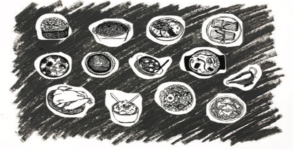On Nov. 8, Oakland police shot and killed Derrick Jones – the third unarmed person of color to be shot and killed in an Oakland police shooting in 2010. In the wake of the controversial Mehserle verdict, Jones’ killing may suggest a pattern of negligence on behalf of the Oakland police force’s use of firearms.
Campanil editors were divided in their opinions about the behavior of Oakland police, some are convinced that Oakland police are out of control while others emphasized the violent streets and potential danger that these officers are asked to navigate every day.
There is a consensus amongst the staff about the need for police accountability, though we do have different visions of what that accountability might look like.
Many of us believe there should be stiffer punishments for those who have been given higher authority, such as police officers. Someone who has been given the right to carry a loaded weapon in public should be held accountable for misusing it. Police officers should be held to the higher standards of the law if they are asked to enforce it on regular citizens. These staff members feel if police were held to stricter standards their authority would be more warranted.
These staff members believe police officers and others in positions of authority should receive harsher sentencing than the average citizen because they are entrusted with our protection.
Others envision accountability being created with watch groups to organize and publish their observations of Oakland police forces.A few watch groups already exist, such as Copwatch, a network of activist organizations throughout the United States and Canada which observes and documents police activity while looking for signs of misconduct or otherwise unreported brutality. Increased Copwatch-style surveillance, some of us feel, is the kind of citizen surveillance that can prevent further violence.
Ultimately, serious changes need to happen – such as a huge increase in training for Oakland’s cops. This training could emphasize how to handle suspects who don’t respond to officer’s commands without firing a gun.
Advocates for reform feel that another possible improvement might be a new design for the Taser holster – this would make the difference between the gun and the Taser more obvious for police reaching for a weapon during a stressful situation (such as described by Johannes Mehserle during his trial for the shooting of Oscar Grant), when mostly muscle memory is in action.
This faction feels that the Oscar Grant case and the cases that have followed, including that of Jones, show that the OPD and BART police have broken the people’s trust and that shooting without warrant is can no longer remain acceptable or unquestioned.
However, other staff members feel that the “cop-bashing” is getting old. This segment does feel it is important that officers are held accountable, especially when unarmed suspects are killed, but think that police officers aren’t necessarily out to “get” anyone. Oakland is generally considered to be one of the most dangerous cities in the US and officers working here are in daily contact with the most violent aspects of our city. These staff members feel that the actions of a few police offers don’t necessarily reflect the conduct of the entire police force.
As far as individual officers, several members feel that the culprit behind these misfires cannot be placed on a single person, but rather are the fault of a racist criminal justice system and an ever-expanding prison industrial complex which disproportionately incarcerates people of color, as well as trans and queer people.
These staff members feel it is worth considering that part of what makes these shootings possible may be the way young black males are portrayed in the media – usually as agents of violence, eternal criminals, prematurely labeled as “up to no good.” There are gangs and there is violence in Oakland. But the image of Oakland as “more dangerous” relies partially on creating and maintaining the racist image of the black male as always on the verge on some kind of “criminal” behavior.
We all agree that the actual cause of the problem needs to be determined before a solution can be put in place. We also agree that the solution has definitely not been found yet, as reports of negligent gun-use continue. Most importantly, all staff members believe every Oaklander should be protected equally under law and by police.


